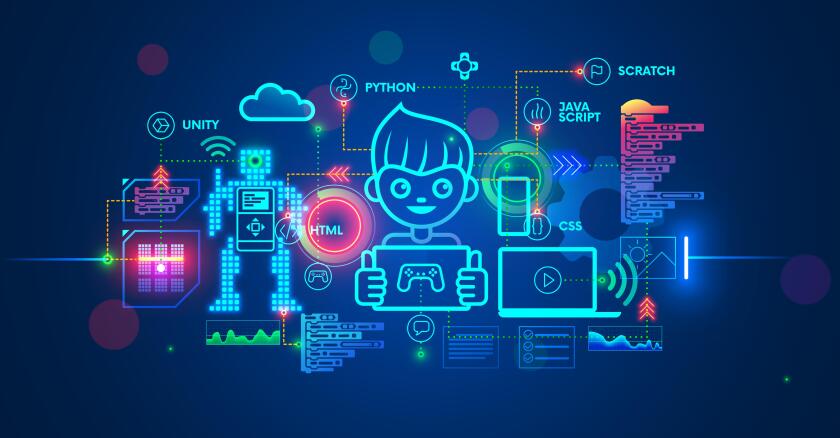Transform Your Leisure Activities Into Profit with Basic Make Money Techniques
Transform Your Leisure Activities Into Profit with Basic Make Money Techniques
Blog Article
Comprehensive Organization Guides for Advancing Technology Education in Schools and Colleges
The combination of modern technology education right into school and college curricula has become a crucial imperative in preparing trainees for a progressively digital labor force. What details approaches can be taken on to optimize their impact on both pupils and instructors?
Significance of Innovation Education
As innovation remains to evolve at an unprecedented pace, the value of technology education has become significantly evident in today's society. The integration of modern technology into various elements of life requires that people have a fundamental understanding of technological principles and applications. This knowledge not only enhances employability however also fosters crucial thinking and analytic skills necessary for navigating a vibrant labor force.
In educational establishments, technology education and learning equips pupils with the capability to adapt to fast modifications in sectors driven by innovation. It urges creativity and equips students to engage with arising innovations, from synthetic knowledge to data analytics. Furthermore, modern technology education promotes electronic literacy, which is vital in a period where details is conveniently available yet usually deceptive.

Key Parts of Effective Guides
Reliable overviews for technology education must encompass a number of vital elements to ensure that students gain one of the most from their experiences. First, a well-defined curriculum is essential, laying out the purposes, learning end results, and the abilities to be created. This curriculum ought to be on a regular basis upgraded to mirror the quickly developing technical landscape, making sure importance and applicability.
2nd, comprehensive resources that consist of books, on-line materials, and hands-on tools are important. These resources ought to be diverse and available, dealing with various discovering designs and choices. Furthermore, incorporating real-world circumstances and instance research studies can improve understanding and engagement.
Third, analysis methods should be included to examine student progression properly. These evaluations ought to be varied, encompassing summative and formative analyses that straighten with the discovering purposes.
Moreover, expert development chances for teachers are crucial. Training workshops and programs can furnish educators with the most recent technical improvements and instructional techniques.
Finally, promoting a joint learning atmosphere motivates peer interaction and expertise sharing. By consisting of these key elements, overviews for technology education can substantially boost the understanding experience, preparing students for future difficulties in an increasingly electronic globe.
Building Market Partnerships
Structure strong market collaborations is an essential aspect of boosting technology education. These cooperations in between universities and services create a dynamic ecosystem that benefits employers, trainees, and educators alike. By promoting relationships with industry institutions, colleges and leaders can align their educational programs with the evolving demands of the work market, making certain that trainees get appropriate skills and expertise.
The growth of teaching fellowships, apprenticeships, and mentorship programs works as a cornerstone of these partnerships. Such chances give students with hands-on experience, boosting their employability and useful understanding of modern technology applications. Furthermore, market companions can provide insights into arising patterns and technical innovations, permitting instructors to adjust their teaching methods as necessary.
Moreover, collaborations can assist in accessibility to resources, such as tools, software application, and financing for research projects. These payments enrich the learning environment and enable organizations to remain at the leading edge of technical innovation. Inevitably, building robust market collaborations is necessary for cultivating a proficient labor force that meets the needs these days's rapidly changing technical landscape, while likewise driving economic growth and competitiveness in the wider neighborhood.
Implementing Innovation Programs
Implementing modern technology programs within academic organizations requires a strategic approach that focuses on both educational program growth and resource allotment. To launch successful technology integration, institutions should first analyze their existing framework and determine voids in resources, including equipment, software application, and personnel training. This analysis makes it possible for universities and institutions to create a customized strategy that straightens with their particular educational goals.
Next, it is necessary to develop a thorough curriculum that includes arising innovations and industry requirements. Working together with educators, sector experts, and stakeholders can make sure that the educational program continues Make Money to be appropriate and efficient in preparing students for the workforce (Grants). Additionally, expert development for professors is essential, as it furnishes teachers with the skills required to effectively show new modern technologies
In addition, institutions must stress the relevance of hands-on discovering experiences, such as workshops and labs, that permit students to apply theoretical expertise in functional settings. This experiential approach improves engagement and cultivates important reasoning. Securing sustainable financing via gives and partnerships can help expand and preserve modern technology programs, ensuring long-lasting success and adaptability in an ever-evolving technological landscape.
Gauging Success and End Results
Assessing the success and results of innovation education programs is vital for validating their influence and assisting future enhancements. Efficient measurement structures should include both qualitative and quantitative metrics, supplying a comprehensive sight of program efficacy. Secret efficiency indicators (KPIs) such as student enrollment numbers, retention prices, and program conclusion percentages use useful measurable data.

Incorporating standardized analyses can additionally assess trainees' technical proficiencies and readiness for the labor force. Benchmarking versus similar organizations allows for contextually pertinent contrasts, highlighting locations for growth.
Eventually, the continual analysis of innovation education and learning programs fosters a culture of renovation, ensuring that they progress in alignment with industry demands and academic criteria. By systematically gauging success, institutions can not just demonstrate responsibility to stakeholders however additionally boost their offerings, thereby enhancing the discovering experience and preparing students for the ever-changing technical landscape.
Final Thought

The combination of technology education into institution and university curricula has actually ended up being a vital crucial in preparing trainees for a progressively electronic labor force.As modern technology continues to develop at an unprecedented pace, the significance of technology education and learning has ended up being significantly obvious in today's culture.In academic institutions, modern technology education and learning outfits trainees with the capability to adapt to rapid modifications in markets driven by technology. By prioritizing innovation education and learning, institutions can grow a generation of educated citizens capable of leveraging innovation for societal and individual development. The implementation of durable evaluation techniques allows establishments to measure success and outcomes, inevitably boosting the overall effectiveness of innovation education and learning efforts and preparing pupils for future obstacles.
Report this page